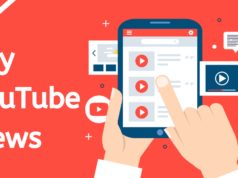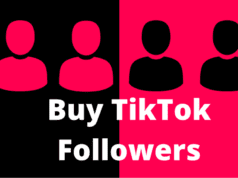
Content marketing has become one of the most popular online marketing strategies, which poses a dilemma for business owners and marketers everywhere: an excessive amount of competition. Differentiating your brand and creating content that’s truly unique can be highly challenging, but one tactic is helping brands achieve new heights of popularity: content personalization.
What Is Personalization?
Personalization is the process of tailoring your content to appeal to a specific demographic, or even a specific individual, rather than a general audience. Using the right tools, you can personalize your entire website, appealing to different people in different ways (based on their browsing history and other information), or personalize your blog content.
In any case, personalization has a handful of major advantages:
- Higher relevance. First, your content is going to become instantly more relevant to the people reading it. Rather than appealing to “bicyclists,” you’ll be appealing to “middle aged, male bicyclists,” which means you’ll be able to offer much more relevant, intriguing insights for that demographic. The downstream effects are higher brand loyalty from those demographics and typically, a higher conversion rate.
- Brand differentiation. Personalizing your content is also an easy way to differentiate your brand from those of your competitors. If you’re in an industry where lots of companies like yours are writing content, you’ll need some way to make yours more appealing, more interesting, or simply “different.” Personalization is a route to achieve this.
- Experimentation and data. If you personalize and customize content in different areas of your website and your blog, you’ll be able experiment with different approaches. You can present “A” and “B” versions of content in different areas of your site, and measure which version is most effective.
So how can you personalize your content?
Dynamic Content Generation
One of the easiest ways is to use a tool for your website that dynamically provides different content to different types of visitors. Depending on the tool you use, you may be able to distinguish audience segments based on their past traffic, their demographic information, or the way they’re accessing your site (like mobile vs. desktop users).
Here, you’ll create different content for different types of visitors, and apply settings so that the correct type of content is displayed for the right audience. This is somewhat time-intensive to start, but because it applies automatically, it saves you a lot of time long-term.
Blog Categories
You can also segment your audiences and write personalized content with the help of distinguished blog categories—or in some cases, entirely different blogs. For example, if you’re running a fitness brand, you might have entirely different sections of your site dedicated to people who want to lose weight and people who want to gain muscle; though there will be some overlap, these people are generally reading fitness articles for different reasons.
If you’re just starting out, it’s more efficient to segment these audiences with the help of blog categories, but if you’re dealing with a bigger audience, it may be in your best interest to build out entirely separate subdomains.
Landing Pages
If you don’t want to go through the hassle of creating segmented blogs, you could segment your audience with the help of targeted landing pages. This is especially helpful if you’re leading your users to a specific call to action (CTA) like purchasing a product.
The major advantage of landing pages is that they can be targeted with minimal investment; it doesn’t take long to create a new one, but it can serve an entirely new market segment once created. Additionally, you can funnel different types of traffic to different landing pages, based on things like traffic source or demographic; all you’ll have to do is instate a redirect, or use a custom URL.
Email Lists and Marketing
If you have lots of content on a blog already, you may be able to personalize your content strategy by utilizing a segmented email list. Separate your email subscribers by a variety of different factors, including age, gender, buying cycle stage, and more, then curate different types of content for those different subscribers. Again, the upfront time requirements for this strategy are high, but once established, it will be easy to maintain an ongoing email campaign.
If content is an important part of your online marketing strategy (as it is with many modern businesses), you should be incorporating some kind of personalized content. There is a wide variety of different personalization methods you can use, so there’s something for almost any entrepreneur. Be sure to keep experimenting, so you can learn more about the demographics that matter most to your business, and provide them with the information and resources they need to make better decisions.








